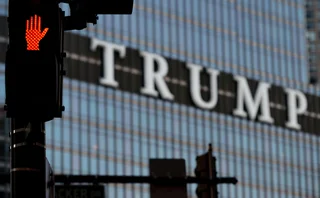
Trading venues could help enforce the forex code
ECNs have the power to boost last look disclosures, but aren’t keen to be the code police
As spot foreign exchange trading becomes more electronic, trading platforms are attracting more scrutiny.
So-called electronic communications networks (ECNs) set the rules for the liquidity providers (LPs) that make prices on their platforms. As of August 6, some 18 trading venues had signed the forex global code of conduct, which sought to strengthen dealing standards after a series of fixing scandals.
Principle 17 of the code encourages LPs to disclose their last look policies, which govern the period of time after an order is received but before execution, during which an LP conducts credit and price checks, sometimes with an add-on period for further monitoring.
Last look is a matter of some controversy, and Risk.net’s analysis of the top 50 LPs in forex shows a spread of practices. Nearly a quarter of firms don’t disclose anything, so participants on anonymous ECNs could be sending orders to counterparties with questionable or opaque last look policies.
Read more on how the top 50 dealers tackle last look and where non-banks stand on last look.
In theory, ECNs could be an ideal partner for the Global Foreign Exchange Committee, a group of central banks and market participants that wrote the code, to ensure these standards are being met across the LP community.
ECNs don’t see it that way, however. Risk.net understands that while some platforms – including EBS Market and Refinitiv Matching – do not allow last look checks, many others do permit it, subject to a few conditions.
One ECN tells Risk.net it enforces a maximum hold time of 100 milliseconds for last look and a minimum order acceptance rate of 75%. Nine LPs were removed from the platform after these standards were put in place. But it’s the exception rather than the rule.
ECNs are in a unique market position, which if used effectively could help boost disclosure of dealing standards across the market
An alternative is to require LPs on a platform to make extensive disclosures on their last look practices, including hold times, policies for rejecting orders and use of rejected order information. But on this, ECNs are largely silent.
One ECN defends its stance to Risk.net, saying they are “not the policeman of the code”.
This approach has angered some LPs, who claim they are put into competition on the platforms against firms that might engage in predatory last look practices.
Some claim it’s a race to the bottom – setting higher minimum standards or requiring extensive disclosures for last look policies could put off too many potential LPs, reducing liquidity on the venue.
Nevertheless, ECNs are in a unique market position, which if used effectively could help boost disclosure of dealing standards across the market.
Only users who have a paid subscription or are part of a corporate subscription are able to print or copy content.
To access these options, along with all other subscription benefits, please contact info@risk.net or view our subscription options here: http://subscriptions.risk.net/subscribe
You are currently unable to print this content. Please contact info@risk.net to find out more.
You are currently unable to copy this content. Please contact info@risk.net to find out more.
Copyright Infopro Digital Limited. All rights reserved.
As outlined in our terms and conditions, https://www.infopro-digital.com/terms-and-conditions/subscriptions/ (point 2.4), printing is limited to a single copy.
If you would like to purchase additional rights please email info@risk.net
Copyright Infopro Digital Limited. All rights reserved.
You may share this content using our article tools. As outlined in our terms and conditions, https://www.infopro-digital.com/terms-and-conditions/subscriptions/ (clause 2.4), an Authorised User may only make one copy of the materials for their own personal use. You must also comply with the restrictions in clause 2.5.
If you would like to purchase additional rights please email info@risk.net
More on Our take
Why did UK keep the pension fund clearing exemption?
Liquidity concerns, desire for higher returns and clearing capacity all possible reasons for going its own way
UBS’s Iabichino holds a mirror to bank funding risks
Framing funding management as an optimal control problem affords an alternative to proxy hedging
Trump 2.0 bank supervision: simpler but no soft touch?
Republican FDIC vice-chair Travis Hill wants more focus on financial risk instead of process
Lots to fear, including fear itself
Binary scenarios for key investment risks in this year’s Top 10 are worrying buy-siders
Podcast: Alexei Kondratyev on quantum computing
Imperial College London professor updates expectations for future tech
Quants mine gold for new market-making model
Novel approach to modelling cointegrated assets could be applied to FX and potentially even corporate bond pricing
Thin-skinned: are CCPs skimping on capital cover?
Growth of default funds calls into question clearers’ skin in the game
Quants dive into FX fixing windows debate
Longer fixing windows may benefit clients, but predicting how dealers will respond is tough








